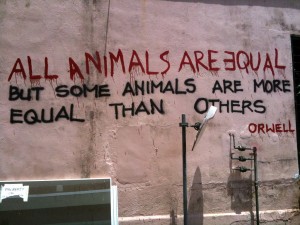The rise in representation of non-human entities


It happened over ten years ago. Jimmy was incarcerated against his will, held in a cage, isolated, and denied the basic freedom he deserved. A Habeas Corpus request was put in on his behalf. A long ordeal involving lawyers and various international organisations.
It happened again last year, in San Diego USA, Tilikum, Katina, Kasatka, Ulises and Corky were all held captive. A lawsuit was filed at a federal court, declaring that they were being held as slaves in violation of the 13th Amendment to the US Constitution (the amendment that abolished slavery and involuntary servitude after the American Civil War).
One simple fact made these two cases unique — none of the subjects were human. Jimmy was a Great Ape. Tilikum, Katina, Kasatka, Ulises and Corky were all orcas. Those were not the first, and certainly not the last.
In 2005, a public prosecutor, Dr. Heron Santana, was involved in the landmark, bench-setting case that would provide the framework for all those that came after. As was the case with Jimmy, a Habeas Corpus was demanded for a female chimpanzee — Suíça, 23 years old, who had lived in a zoo for four years. What transpired made Suiça the first animal to be recognized as a subject in a court of law. In the end, the Habeas Corpus was approved — unfortunately, it was on the day after she was found dead in her cage.
Animal activism had always existed before then. But perhaps that was the spark the trend needed. Indeed, numerous examples now exist, including perhaps the most well known — the World Declaration on Great Primates, that proposes the extension of rights allowance in an equal way to all great primates: human beings, chimpanzees, bonobos, gorillas and orangutans, and identifying the three basic conditions to the relationship between humans and great primates — the right to life, individual freedom, and prohibition of torture.
With chimps and other great apes the difference is clear — “the only difference is that they do not talk
 Follow
Follow
1 thought on “The rise in representation of non-human entities”
Comments are closed.